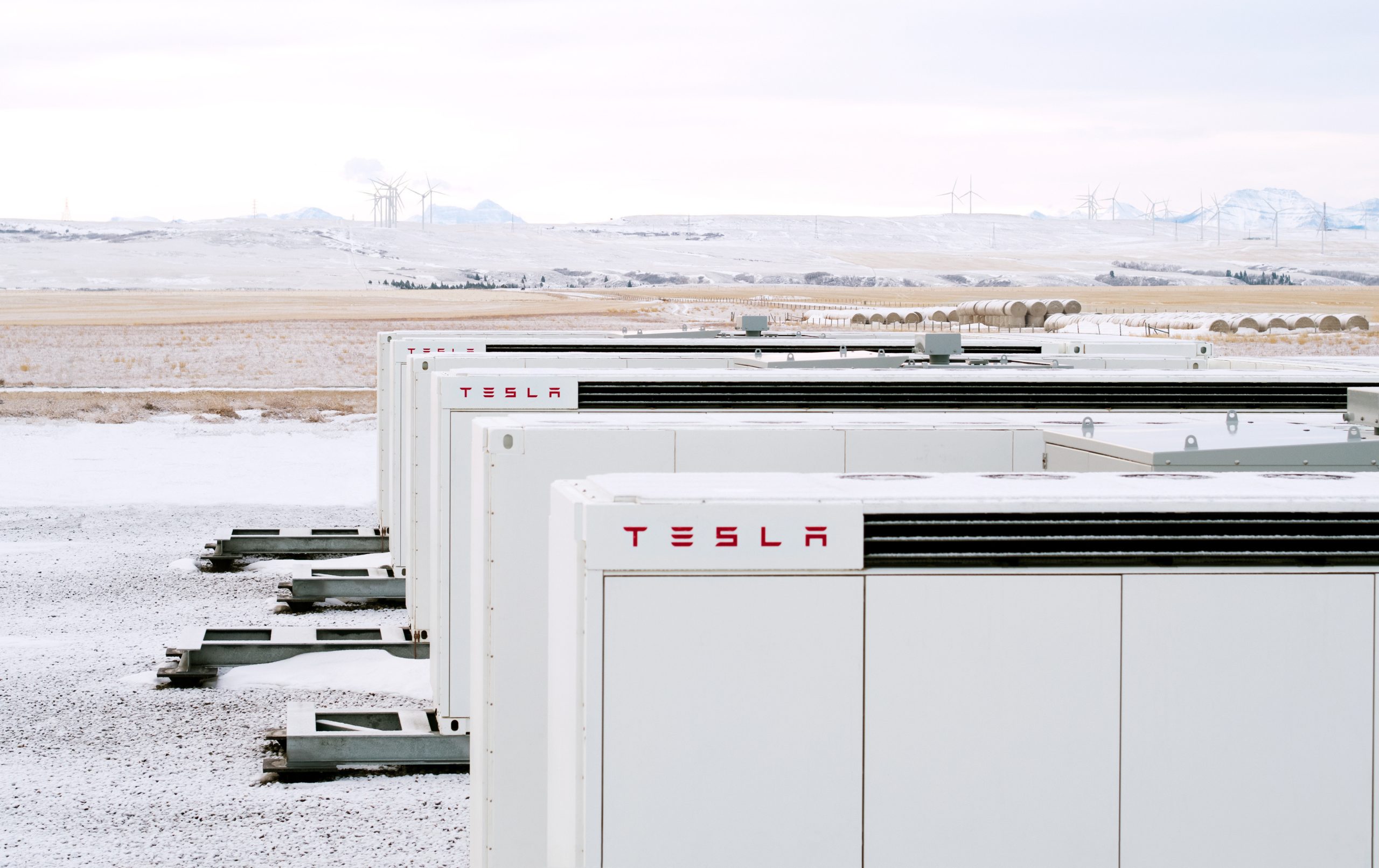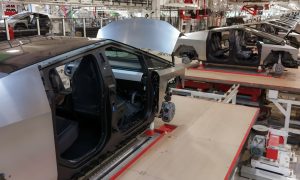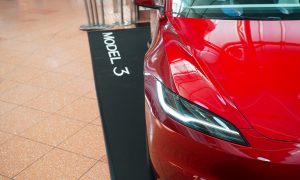Installation of large-scale energy storage systems is expected to continue increasing in the U.S. throughout 2024, as championed by only a handful of states thus far.
According to data from the Energy Information Administration (EIA) shared on Tuesday, U.S. energy storage system deployment is expected to nearly double in 2024, with battery capacity forecasted to grow by 89 percent. As of November 2023, two U.S. states have installed substantially more energy storage systems than others, making up the vast majority of battery capacity available.
The data shows that California leads energy storage availability by a wide margin, with just over 7.3 GW (7,302 MW) of battery capacity installed. Texas follows in second with nearly 3.2 GW (3,167 MW) installed, while Arizona, Florida, and Massachusetts are next in the lineup.
You can see the full top 10 list for U.S. states with the most battery capacity installed below, courtesy of the EIA.
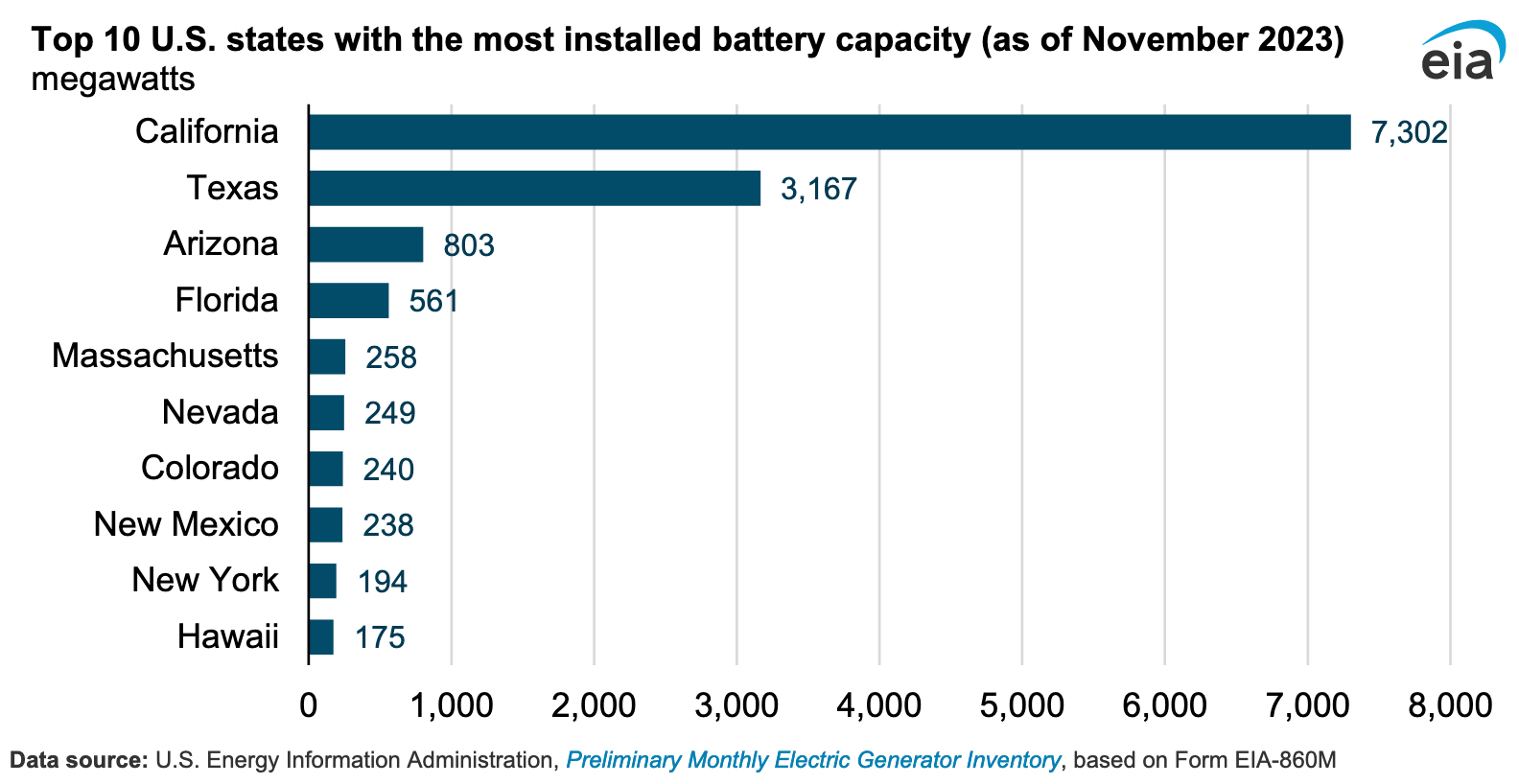
Credit: Energy Information Administration
The data takes into account planned storage system projects for the next two years, and the agency says developers are aiming to expand U.S. storage capacity by 30 GW by the end of 2024. As the EIA also notes, U.S. battery storage capacity has been increasing since 2021, and if the aforementioned goal is achieved, the country will have more energy storage than petroleum liquids, geothermal, wood and wood waste, or landfill gas by the end of this year.
There are over 300 utility-scale battery storage projects planned to be brought online by 2025, with roughly half of them being in Texas. Currently, the largest operating battery energy storage system (BESS) is a project operated by Vistra in Moss Landing, California, which has 750 MW of capacity and is located not far from Tesla’s 182.5 MW Megapack site in the same city.
Four out of five of the largest BESS installations set to take place in 2024 or 2025 are in Texas, as listed below:
- Lunis Creek BESS SLF (Texas, 621 MW)
- Clear Fork Creek BESS SLF (Texas, 600 MW)
- Hecate Energy Ramsey Storage (Texas, 500 MW)
- Bellefield Solar and Energy Storage Farm (California, 500 MW)
- Dogwood Creek Solar and BESS (Texas, 443 MW)
As for the recent increases in storage capacity, the agency says that quickly increasing wind and solar generation fleets in California and Texas have increased the need for growth in the battery storage sector. With energy storage projects, utility operators are able to store power during times of low electricity demand and then deploy stored energy during times of peak demand.
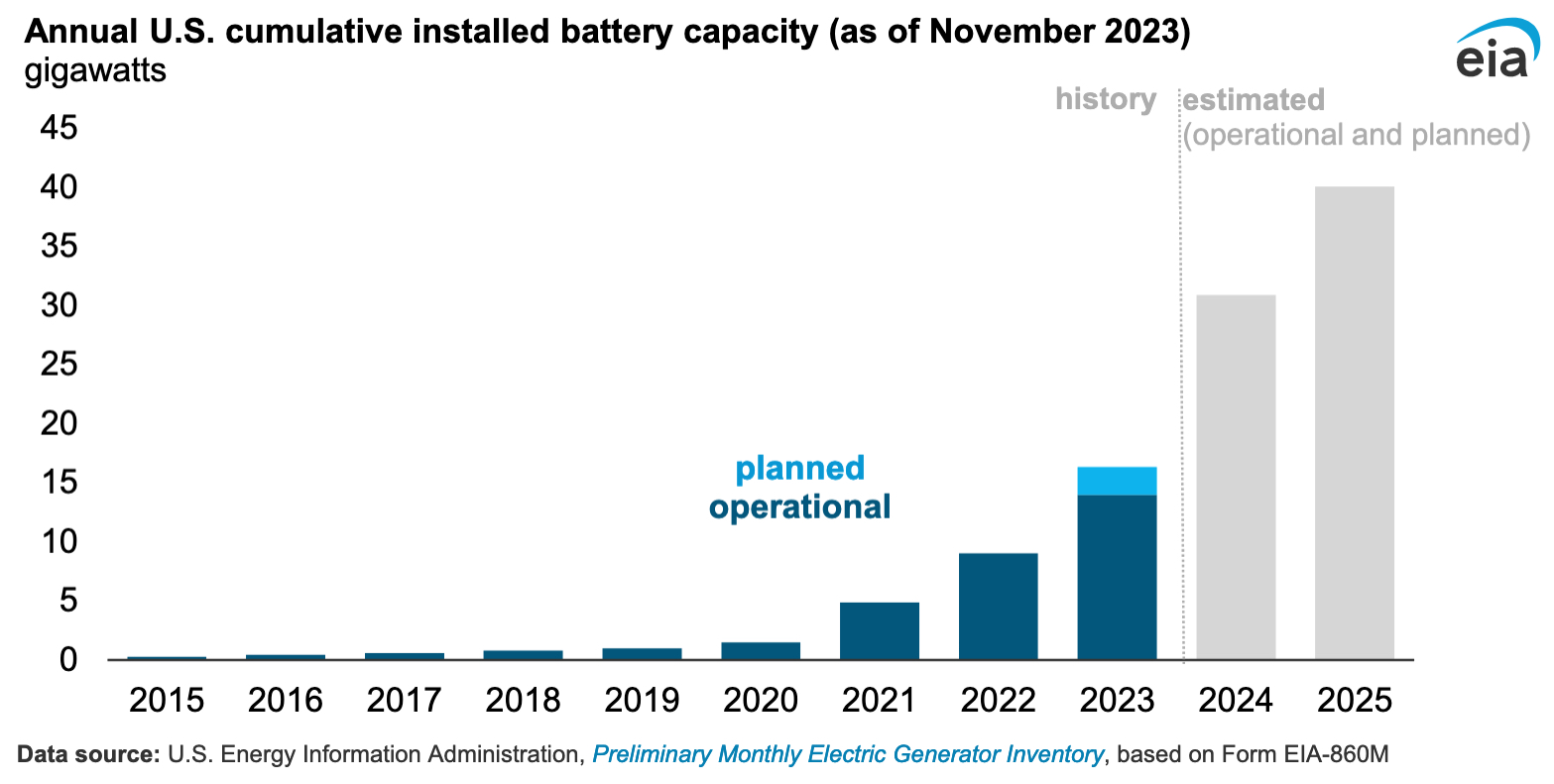
Credit: Energy Information Administration
The news comes just a few days after Tesla Megapacks went live on the island of Oahu in Hawaii, enabling a 185 MW project that has helped the island move away from the use of coal. The project isn’t represented in the EIA’s dataset, since that data only accounts for installations through last November.
In addition to its grid-scale Megapacks, Tesla also offers smaller, residential-level Powerpacks to create what it calls Virtual Power Plants (VPPs), essentially forming giant, distributed batteries that customers can use to sell energy back to the grid in times of peak demand. Currently, Tesla has pilots for these programs in states including California, Texas and Massachusetts, along with the U.S. territory of Puerto Rico.
Tesla Powerwall owner earns $574 by participating in California’s VPP program
What are your thoughts? Let me know at zach@teslarati.com, find me on X at @zacharyvisconti, or send your tips to us at tips@teslarati.com.

